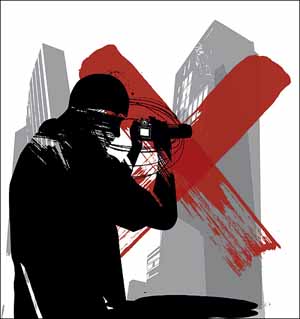
Here is the list from Arizona State University Professor Tim McGuire. Comments?
Tim’s baker’s dozen list of things to remember when you’re deciding whether to publish a potentially controversial photo.
1. Can the reader handle this picture and his Wheaties? Don’t shock or offend just for fun or just because you can. If a picture is going to make readers sick and angry all the flags have to go up. This must be discussed.
2. Dead bodies carry a presumption that you don’t use it. All the flags have to go up. This must be discussed.
3. Ask whether this photo is going to embarrass or shame an innocent person or a minor.
4. Does the controversial photo have great power? To overcome the above concerns the photo must convey its content powerfully.
5. If the flags have gone up and there is a discussion, will publishing this photo serve a larger purpose and contribute to the common good in some way? (This is a large concept question.)
6. Does this actual photo communicate something larger about a person, group or movement? (This question is about this specific photo not a concept.)
7. How big is the event surrounding this picture? The Oklahoma City bombing or Sept. 11 carry far more import than a gory accident on Mill and University.
8. Who is involved in the event? ASU President Michael Crow and Dean Callahan would change the University and Mill accident significantly.
9. If you’re struggling with the decision, do the distance test. Would you publish this photo if it happened in your dorm rather than Germany or Boston?
10. If you decide to publish, take every possible step to preserve the dignity of the subject while selecting pictures that preserve as much of the power the photographer captured as possible.
11. Make sure you can write your public justification and you are prepared for the first phone call BEFORE you publish.
12. Share that written justification with diverse groups in the newsroom: women, people of color, young old etc.
13. Don’t be a wimp! The easy thing to do is to not publish any controversial photos. The reader is not well-served by that stance either. Be sensitive and cautious but don’t crawl into a hole either. If you make a dumb decision the public will learn about the photo and will be angry you kept it from them.


